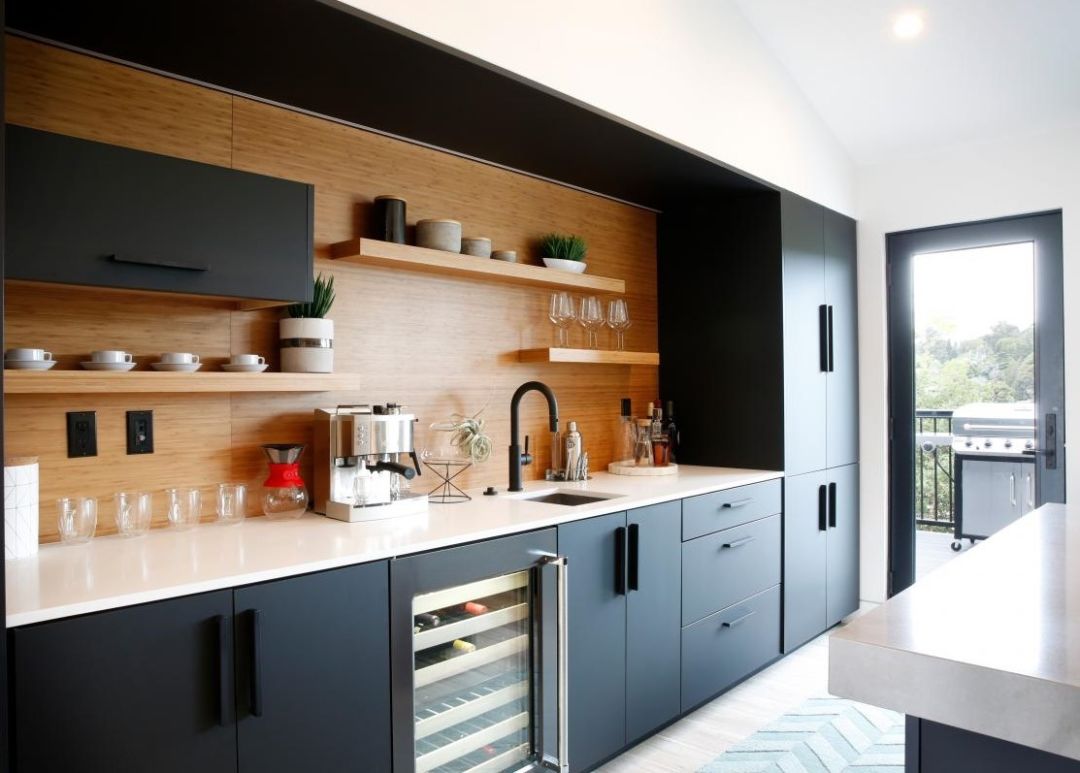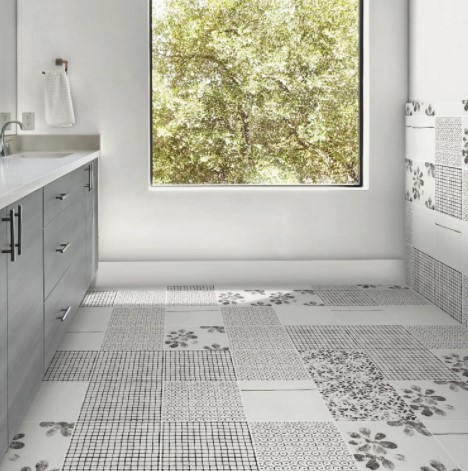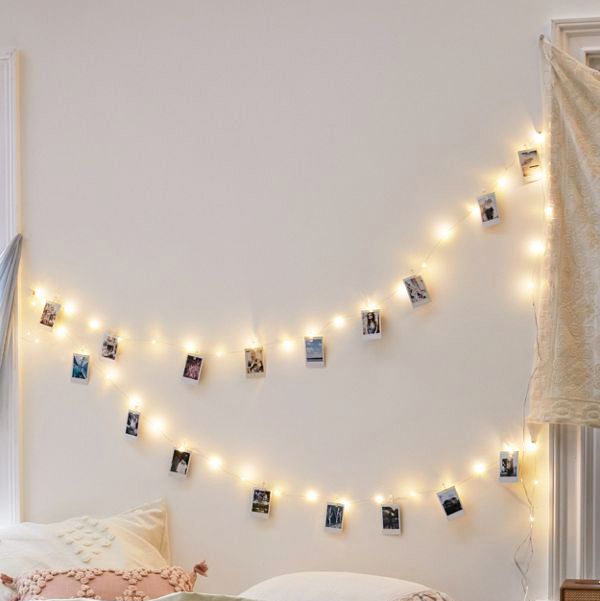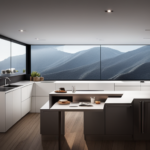Home Design and Renovation
How to Design a Functional and Stylish Kitchen

The kitchen should have one sink, placed on one side next to either the stove or the refrigerator. This sink should have a landing space of 460mm on each side. In addition, the kitchen needs cooking surfaces with a 300mm landing area on one side and a 380mm landing area on the other side. Also, there should be a clearance of 600mm above these surfaces. It is important to keep the fire extinguisher away from the cooking appliances.
Work triangles improve functionality
Creating a work triangle in the kitchen can help maximize the efficiency of your space. This design principle places the main work stations close to the cook. The idea is to minimize traffic and interruptions. A work triangle also reduces the chance of accidents by preventing traffic from entering the kitchen.
Think about your daily routine and your lifestyle to design your kitchen work triangle. Consider what is most convenient and what isn’t. Also, consider where efficiency can be improved. For example, is there a refrigerator too far from your cooktop? Or is the trash can too far from the sink? Think about these things and figure out where you’d like to place your appliances.

A kitchen work triangle is composed of three areas: the sink and stove, as well as the refrigerator. These three areas should be separated by a distance of between three and nine feet. It is also important to have a good distance between each appliance. You should leave enough space between them to avoid bumping into each other.
A kitchen work triangle will help you organize your space so that you can perform all your tasks more efficiently. It will help you save time by minimizing travel time and keeping kitchen counters accessible and organized. For example, you’ll be able to stack dirty dishes more efficiently and easily move food from one place to the next, and your preparation and cleanup time will be reduced.
The kitchen work triangle design works well in traditional U-shaped kitchens. However, there are many other layouts that can accommodate this design principle. You can keep the triangle design in an open-concept kitchen with an island or an L-shaped layout. A galley with an enclosed end can be used as a perfect triangle for the kitchen work area.
A kitchen work triangle is a time-tested design principle that will help improve the efficiency and functionality of your kitchen. Having the three main work areas close together will save you time and prevent countless steps and spills in the process.
Adding a secondary focal point
The most difficult part of remodeling your kitchen is choosing the right focal point. This could be a modern appliance or a new piece technology. If you’re renovating a historic home, the process can be more complicated. But it’s well worth the effort to create a stunning space.
You may need to include more than one focal point depending on the size and shape of your kitchen. Adding a secondary focal point to a kitchen design can make your space appear more spacious and bright. However, make sure to use subtle accents to complement the primary focal point.
Design is incomplete without focal points. A secondary focal point can help orient viewers. By framing the focal point, you can make it stand out and attract attention. To draw attention to the focal point, you might also consider adding design elements. A focal point should be part of the primary purpose of the room, or its use.
Choosing a secondary focal point is a great way to continue the story of your kitchen and make the entire space more functional. Adding a secondary focal point can also help to maintain the symmetry and balance of your kitchen. Using scaled appliances, cabinetry, and countertops can help you achieve these goals.
The focal point does not have to be expensive to create a dramatic effect. It can be something as simple as a colorful backsplash. A bold decorative element can tie together your kitchen’s theme and be a focal point. You can also incorporate it into the rest of the home’s decor by incorporating a bold color on the walls.
Choosing materials
The materials you choose for your kitchen can make a big difference in how it looks and feels. It is important to give each material its due consideration to create a harmonious space. You should also consider the functionality of each material before deciding on a combination. The right combination of materials can create a stunning kitchen that is both practical and stylish.
Choosing materials for a kitchen can be a daunting process. You can start by choosing your countertop and cabinets finishes. Next, you can move on to choosing flooring and backsplash materials as well as paint colors. You can even get help from a design specialist who can help you with choosing your appliances and cabinets.
Kitchen cabinets are the foundation of your kitchen and are the most visible element. Different wood types and shades can give your kitchen unique characteristics. Different wood types can give your kitchen a rustic or formal feel. It doesn’t matter if you choose oak, maple, maple, or cherry wood for your kitchen, it is important to choose the right material.
For countertops, stainless steel is an excellent choice. It has a hygienic finish and is highly durable. You can choose from a variety of glass tiles or stainless-steel tile to make a backsplash. You can also choose tiles that don’t require grout. Stainless steel backsplash tiles are available in many shapes and can be easily installed by DIYers.
Choosing materials for kitchen design depends on your budget and the style you prefer. Solid wood is an attractive option but it is prone to expansion and contraction. Therefore, it is important to choose a skilled designer with experience in creating kitchens. Alternatively, you can choose veneer, which is a thin slice of natural timber applied to a stable substructure. These are cheaper than solid wood. You can also use a wood effect laminate to cover the inners of your cabinets.
Choosing materials for kitchen design is important because kitchens are usually filled with hot liquids and sharp objects. The right materials will make your kitchen safe and functional. Choose materials that are durable and will look great for a long period of time. Before making your final decision, you should consider all these factors.
Hi, I’m Emma. I’m the Editor in Chief of Tiny House 43, a blog all about tiny houses. While tree houses are often associated with childhood, they can be the perfect adult retreat. They offer a cozy space to relax and unwind, surrounded by nature. And since they’re typically built on stilts or raised platforms, they offer stunning views that traditional homes simply can’t match. If you’re looking for a unique and romantic getaway, a tree house tiny house might just be the perfect option.
Home Design and Paint
How to Choose a Paint Design For House

The color you choose for your home’s exterior paint can impact how others view it. Erika Woelfel, Behr Paints’ color vice president, recommends a light tone like smokey white for the most attractive look to potential buyers. She notes that this color works well with Colonial or farmhouse-style homes.
Monochrome colors
Monochromatic paint schemes create a feeling of unity and calm. The simplest versions feature a single color palette, while more complex variations can be created using different hues and tints. A monochromatic palette can be a great choice for interior design projects. You will have more options if you use fewer colors.

It is important to keep things simple when choosing monochromatic colors. This is because too many colors can cause confusion. To avoid this problem, limit the color palette to three or seven different shades or tones. This is particularly important if you are planning to use patterns or symmetrical designs.
Monochromatic color schemes can be eye-catching and simple, or bold and dramatic. Monochromatic color schemes can be a great choice if you want a bold statement but not to overwhelm your space. But beware that these designs may also be too heavy-handed. To make sure you’re choosing a color scheme that will work for you, consider some tips from interior designers.
One way to use monochromatic colors in paint design for house is to use your existing color palette as a jumping-off point for your paint scheme. You can use existing decor as inspiration, and this way you’ll stay true to your design aesthetic. Try pairing monochromatic colors with complementary shades of the same color. For example, if you have a brown sectional, you can add red accents using cream textiles and yellow-brown wood.
Monochromatic color schemes can make rooms feel spacious and luxurious. They are also easy to achieve and can be subtle. A grayish blue will add personality to an entryway. Steven Gambrel, designer, chose Benjamin Moore Shaker Gray 1594 as the wall and door. Benjamin Moore Platinum Gray PM-7 was used for trim.
Monochromatic color schemes are great for bedrooms. They create a relaxed atmosphere by using toned-down accents. A bedroom is the ideal place for a monochromatic color scheme. These toned-down colors are easy to mix together. You can also use color strips for lighter and darker versions.
Textured walls
If you are painting textured walls in your house, you may be wondering what type of paint to choose. Whether you choose a flat finish or a semi-gloss finish, you will need to choose one that is reflective. Textured walls are difficult to paint as they tend to collect dirt and other grime. It can also be difficult to clean them. It can take longer and also result in broken texture.
Textured walls can add depth and visual interest to a room. Textured walls can hide imperfections in drywall finishes. While textured walls can be difficult to clean, they can conceal imperfections and make the room look cleaner for longer periods of time. These textured walls can be used to offset artwork or other design elements. But they may not be suitable for every house. Before you decide to buy one, consider the pros and cons.
There are many ways to create textured walls. One method is to use a textured paint and apply it to the wall using a brush. Other methods include applying a texture-based paint using a roller or a sponge. Textured paints come in various textures and have different names.
Textured walls are a very popular feature in interior design projects. However, they are not the same as the textured feature walls of decades ago. This trend is more refined, tactile. This trend is far more sophisticated than the sponge painting techniques of 90s. Instead, these walls are characterized by their unique features and can add a lot of depth to a room.
Textured paint is a good way to add texture to flat walls. Many paints are ready-to-use and can be applied directly on the wall surface. Some of them even contain different materials to create a unique textured look. You can either hire a professional or apply the paint yourself. You should be patient and have the time to complete this step.
When applying textured paint to walls, you should first make sure that you clean them thoroughly. It may be necessary to apply a thin coat of paint to the walls before you can proceed. After the base color has dried, you can apply the second color. In order to achieve a more defined texture, you can also use a paint comb.
Textured stripes
Textured stripes are a wonderful way to add color to your walls. They look great in any room. The first step is to choose the wall that is most suitable for the stripes. Ideally, the wall should be large and free of obstructions. You can also paint the entire room first, then add the stripes.
Textured stripes can be bold or subtle. It can make a room appear larger and taller. The stripes should be about four to 12 inches apart. To ensure they are straight, use a laser level. This design is also a good choice for older walls.
You can apply stripes horizontally, vertically, and diagonally. Faux finishes can also be applied to them. To achieve a faux finish, you can use ragging, sponging, or glazing. You can also apply stripes to the ceiling. You can also create a chair rail using one wide horizontal stripe.
Textured stripes can be applied with a brush or roller. This look can be achieved using a variety of painting techniques, including dry brushing, hand-painting and rolling-on. Decorative finishes are great to create multi-colored, multi-size stripes. There are a few best practices when painting stripes, including choosing the correct colors and direction.
Hi, I’m Emma. I’m the Editor in Chief of Tiny House 43, a blog all about tiny houses. While tree houses are often associated with childhood, they can be the perfect adult retreat. They offer a cozy space to relax and unwind, surrounded by nature. And since they’re typically built on stilts or raised platforms, they offer stunning views that traditional homes simply can’t match. If you’re looking for a unique and romantic getaway, a tree house tiny house might just be the perfect option.
Bathroom and Bedroom Design
How to Choose a Bathroom Tiles Design

Modern and stylish, dark and muted tones make for a great option for bathroom tiling. There are numerous decorative patterns that can complement these colors, which come in a wide range of shades. Gray tiles have a matte finish that helps reduce slippery surfaces and effectively hides fingerprints and dried water spots. Additionally, these tiles are resistant to stains and only need to be cleaned with a damp cloth. Choosing gray tiles will give your bathroom a modern and elegant appearance, capturing a sleek and contemporary style. [Translated the link: solar panels need to be cleaned]
Glass mosaics
Glass mosaic tiles make a stunning choice for bathroom design. They are available in many colors and shades. Combining glass and natural stones gives it a classic look while adding a unique mix of earthy tones with polished finishes. Glass mosaics are difficult to install yourself, so you may want to hire a professional. Glass mosaics can be very expensive.
MEC can help you decide if glass mosaics are right choice for your bathroom. They are available to provide free design consultations or create custom mosaic designs. These designers have a wide selection of colors and textures, including hand-cut and pixelated mosaics.
One of the biggest advantages of glass mosaics is that they are waterproof and will not stain. They can also reflect light and work well with dark colours. You can even opt for mirrored mosaics to add a sense of sophistication and style to your bathroom. Just be sure to find a tile that complements the rest of your home decor.
Glass mosaic tile can be used as the focal point of your bathroom or combined with another type. This will create a dramatic effect. For example, hexagon glass mosaic tiles can add a touch of shimmer, a soothing effect, and are a beautiful way to add variety to your bathroom. You can find hexagonal glass mosaic tiles in many colors. They can also be made from glass, stone, or other metals.
Black and white patterned tile
Black and white bathroom tiles can be elegant and glamorous. They have a long history and were very popular in the Victorian era and Arts and Crafts period. This timeless combination has now been duplicated in vinyl tiles. If you want to add some whimsy to your bathroom, you can go for a black and white hexagon tile pattern. White hexagon tiles can be decorated with dots, circles, or flower shapes.
Patterned tiles are also great for feature walls, which are usually behind freestanding bathtubs. They can add drama and create a focal point. The pattern should not be too busy or overwhelming for the space. If you don’t want to go overboard with your bathroom’s pattern, consider using plain white metro tiles. These tiles will compliment any type of black flooring.
Black and white bathroom tiles can look elegant when used on the floors and walls. They are also great for showers. White floor tiles with black grout are another alternative. This is a great option for both modern and traditional designs. These tiles also have a timeless appeal and are a great choice for any bathroom.
If you’re looking for a more traditional feel, you can go with white hexagon tiles with a starburst pattern. These tiles look very elegant when used on the walls and in the shower area. A black-framed mirror and a white pedestal sink give the room a classic look. The room will feel luxurious and complete with a black freestanding tub.
Subway tile
Subway tiles are a classic design that adds a touch classic chic to any space. These tiles are now making a major comeback in interior design and are popular in all types of homes. Their sleek look and natural look blend well with a variety of design styles, including Scandinavian, art deco, and industrial.
Subway tile is available in a variety of colors and materials, and can be laid in almost any pattern you want. Subway tiles are easy to use as accents for other design elements or arrange in a variety of layouts. Subway tiles can be used in bathroom tiles designs without spending a lot of time or money.
If you’re not ready to use subway tiles throughout the bathroom, you can use one or two walls to showcase the pattern. You can also use a different type of subway tile to contrast it. To play up the circular motif on a small wall, a penny tile could be used. You can also use different sizes and grout colors to create a modern look.
Subway tile is a great choice for modern bathrooms. Its glazed surface makes it easy to clean and stain-resistant. It also reflects light making it a great choice for bathrooms.
Metal tiles
Metallic tiles can bring a touch of class and elegance to your bathroom. These tiles come in a variety of colors, including stainless steel, aluminum, and copper. They are easy to clean and can create unique focal points in any space. They make a great backsplash or bathroom wall choice. The range of designs is endless. There are many options for colors, finishes, patterns, and styles to create the perfect bathroom look.
Your walls will look sleeker and modern with a metallic sink surround. This glossy surface looks great with chrome handles and white sinks. It can also work in smaller bathrooms. This is a great option for bathrooms with limited space. It’s affordable and can give your bathroom an updated look. You can also find smaller metallic tiles that fit the theme of your bathroom.
Another great option for a contemporary bathroom is a metal tile shower. Because of their resistance to rust and corrosion, many manufacturers allow customers to use metal tiles in wet areas. The metal used in these tiles is typically made of stainless steel. This metal is not mixed with any other metal to prevent rusting.
Another type of metallic tile is one where the material is embedded in the tile. These tiles don’t require grout and look great on any wall or floor. These tiles can also be used to replace existing tiles. For a truly authentic metallic effect, you should consider using real metals for these tiles. They are also easy to maintain, and can look fresh and sparkling with the use of an all-purpose cleaner.
Wood-look tile
Bathroom tiles with a wood-look look are a great choice. These tiles look like wood but can be used in any room. There are six different types to choose from. You can choose the one that best suits your needs. You can also choose from different grout colors, as well.
Wood-look tiles are available at many retailers nationwide. They can be very affordable or very expensive depending on the brand and style. Depending on your budget, you can find tile that will suit your design needs. Wayfair stocks many brands of wood-look tile and offers a variety of value-priced options.
Wood-look bathroom tiles are suitable for use on the floor and accent walls. It is easy to create dramatic looks with the tile’s wood-like texture. These tiles are also easy to clean and maintain. They can be cleaned with a broom, or a hard floor vacuum. In addition, you can easily clean them with a mop and bucket of soapy water.
There are many styles and colors available for wood-look bathroom tiles. For example, the EWOOD Nut Nature tile features a walnut-colored walnut pattern, which adds a rustic, forest-like feeling. Overhead lights make the walnut-colored tiles stand out. Moreover, Porcelanosa has introduced the SEEDWOOD Tanzania collection, one of the most vibrant and diverse wood-look porcelain tile series. It features an impressive range of color and texture and makes a statement of high-end luxury.
Hi, I’m Emma. I’m the Editor in Chief of Tiny House 43, a blog all about tiny houses. While tree houses are often associated with childhood, they can be the perfect adult retreat. They offer a cozy space to relax and unwind, surrounded by nature. And since they’re typically built on stilts or raised platforms, they offer stunning views that traditional homes simply can’t match. If you’re looking for a unique and romantic getaway, a tree house tiny house might just be the perfect option.
Room Decoration
Types of Decorated Rooms

Different types of decorated areas
There are many types of decorated rooms. We’ll be discussing the different types of decorations and multi-purpose furniture in this article. If you’re planning to redecorate a large living room, consider these ideas: Multi-purpose furniture. These pieces can be used to read, watch TV, or relax on the sofa.
Ideas for decorating large living rooms
One of the main goals when decorating a large living room is to create a sense of balance. To create a conversation space, you could place a small table in central part of the room. It is also a good idea not to have too much clutter. Clutter can make a large living room feel uninviting and difficult to maintain. You can achieve balance by using the right design elements.
To tie the room together, use repeating elements. For example, a painted niche can draw attention to an architectural feature, while artwork can echo those features. A simple color palette will give the space an harmonious feel. Then, make use of accessories that complement your chosen theme.
Another great idea for large living rooms is to keep furniture away from the walls. A large space can be used as a conversation area or a focal point. If there are no walls, you can add art or bookcases. Larger rooms will require bolder accessories and art work. Larger pieces will make a bigger impact. Layering furniture and accents will help to make the space feel cozier.
Using neutrals, soft blues, and whites can create a soothing environment. You can use decorative trim to create zones in your room that aren’t too bright. A light carpet can be used to add pattern. Your sofa’s color can make or break the mood. Dark colors will make your large living room feel formal, while light and airy colors will provide a relaxed feeling.
Another way to make a large living space appear larger is to add height. To give the room more visual height, drapes can be hung higher than the frames of the windows. Crowd moldings can be used to beautify the border between the ceilings and walls. Large pictures can also be placed on decorative shelves.
You can make a large living space feel more comfortable and cozy by adding key pieces. Matching coffee tables and other small touches will give your living room a homey feel. Designers often find creative ways to make large rooms feel cozy. A great solution is to use matching coffee tables.
Another great way to divide large living rooms is with rugs. A patterned rug can help to define an area in large living rooms. To visually fill the space, use rugs in a variety of textures and colors. A large rug can also be used as a focal point in the seating area.
Multi-purpose furniture in a living room
Multi-purpose furniture can make the most of limited living space. It can include extra storage, a dining table, and a work space. It can reduce the environmental impact of your house. These pieces are convenient and make your living room appear larger and more spacious. In addition, you can save money and space by using multi-purpose furniture. These are some tips to help choose the right furniture for your living space.
If you have a small living space, you may have to be creative in arranging the furniture to maximize space. Multi-purpose furniture is essential in these situations. It serves two primary purposes and is highly versatile. Multi-functional furniture is ideal for small spaces as it can be easily moved from room to room.
Multi-purpose furniture is a great way to save space while still maintaining a high degree of style. These pieces are generally simple in design but can provide uses that a basic furniture item cannot. You can store books in one piece and use the other to store magazines or books.
Examples of decorated rooms
Creating a visually interesting space can be done with the help of different types of textured materials. These materials reflect light and create shadows or highlights. Combining organic and linear pieces can create a unique look. In general, you should use linear pieces on harder surfaces and organic shapes on softer ones.
Hi, I’m Emma. I’m the Editor in Chief of Tiny House 43, a blog all about tiny houses. While tree houses are often associated with childhood, they can be the perfect adult retreat. They offer a cozy space to relax and unwind, surrounded by nature. And since they’re typically built on stilts or raised platforms, they offer stunning views that traditional homes simply can’t match. If you’re looking for a unique and romantic getaway, a tree house tiny house might just be the perfect option.
-

 Beginners Guides3 months ago
Beginners Guides3 months agoHow To Buy A Tesla Tiny House
-

 Energy Efficiency3 weeks ago
Energy Efficiency3 weeks agoBest Tiny Homes For Cold Climates
-

 Beginners Guides3 months ago
Beginners Guides3 months agoTiny House Nation Where Are They Now Stephanie
-

 Tiny House Resources (e.g., legalities, cost, insurance, FAQs)1 month ago
Tiny House Resources (e.g., legalities, cost, insurance, FAQs)1 month agoDo Tiny Homes Need Planning Permission?
-

 Beginners Guides3 months ago
Beginners Guides3 months agoFrom The Show Tiny House Nation How Many Keep Their Tiny House?
-

 Beginners Guides1 month ago
Beginners Guides1 month agoUsing a Climbing Net For Treehouse Construction
-

 Beginners Guides1 month ago
Beginners Guides1 month agoHow to Build a Treehouse Without Drilling Into the Tree
-

 Beginners Guides1 month ago
Beginners Guides1 month agoHow to Build a Treehouse Rope Bridge
















